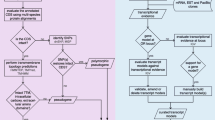Abstract.
Olfactory receptors (ORs) constitute the largest multigene family in multicellular organisms. Their evolutionary proliferation has been driven by the need to provide recognition capacity for millions of potential odorants with arbitrary chemical configurations. Human genome sequencing has provided a highly informative picture of the "olfactory subgenome", the repertoire of OR genes. We describe here an analysis of 224 human OR genes, a much larger number than hitherto systematically analyzed. These are derived by literature survey, data mining at 14 genomic clusters, and by an OR-targeted experimental sequencing strategy. The presented set contains at least 53% pseudogenes and is minimally divided into 11 gene families. One of these (no. 7) has undergone a particularly extensive expansion in primates. The analysis of this collection leads to insight into the origin of OR genes, suggesting a graded expansion through mammalian evolution. It also allows us to delineate a structural map of the respective proteins. A sequence database and analysis package is provided (http://bioinformatics.weizmann.ac.il/HORDE), which will be useful for analyzing human OR sequences genome-wide.
Similar content being viewed by others
Author information
Authors and Affiliations
Additional information
Electronic Publication
Rights and permissions
About this article
Cite this article
Fuchs, T., Glusman, G., Horn-Saban, S. et al. The human olfactory subgenome: from sequence to structure and evolution. Hum Genet 108, 1–13 (2001). https://doi.org/10.1007/s004390000436
Received:
Accepted:
Issue Date:
DOI: https://doi.org/10.1007/s004390000436



